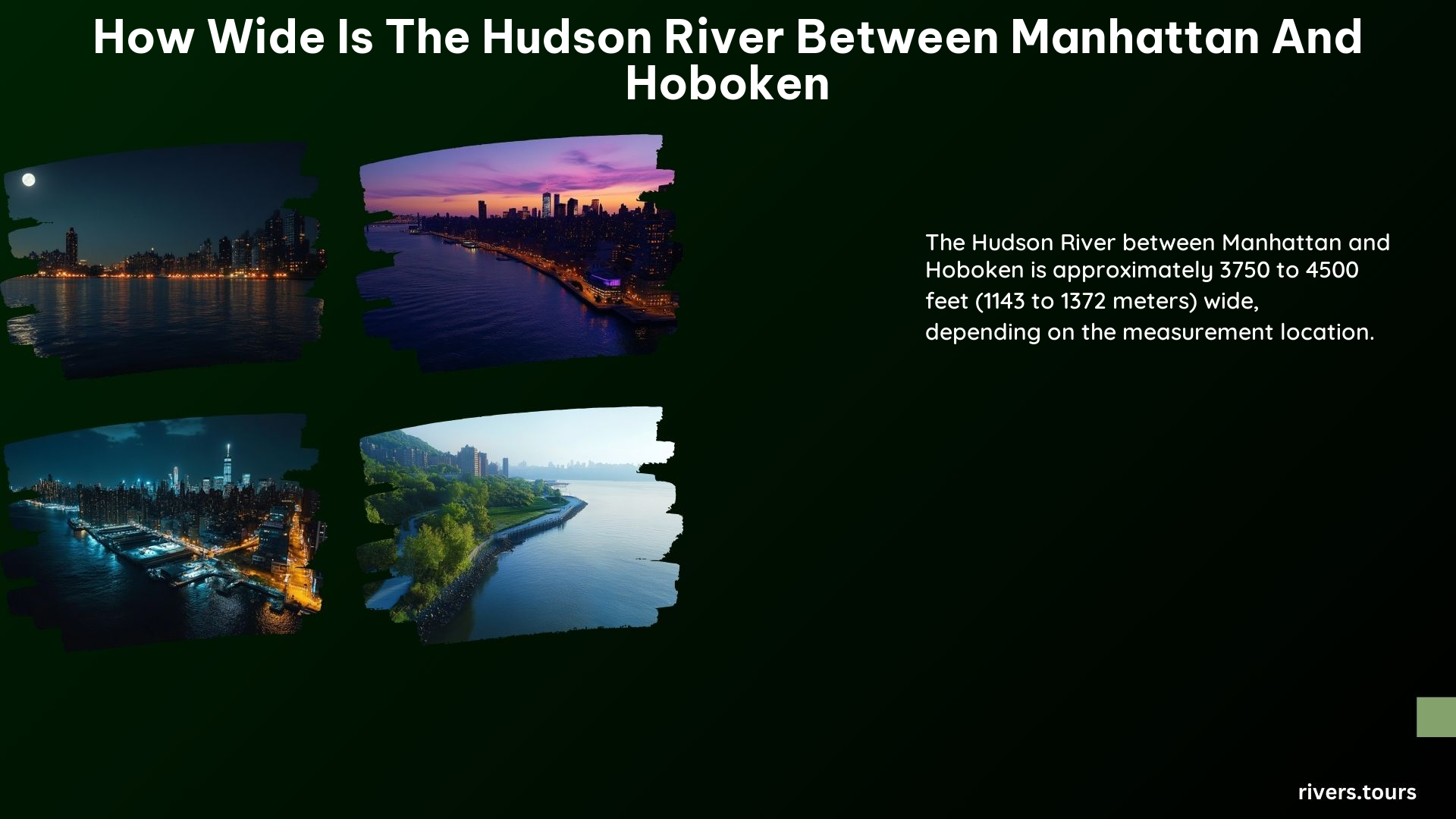The Hudson River between Manhattan and Hoboken is approximately 3750 to 4500 feet (1143 to 1372 meters) wide, depending on the specific location. The river is narrower at the point where the Stevens Institute of Technology is located, measuring about 3750 feet (1143 meters) wide. At other points in the Hoboken area, the river is about 4500 feet (1372 meters) wide.
What is the Exact Width of the Hudson River Between Manhattan and Hoboken?

The Hudson River between Manhattan and Hoboken is approximately 3750 to 4500 feet (1143 to 1372 meters) wide. The river is narrower at the Stevens Institute of Technology, measuring about 3750 feet (1143 meters) wide. At other points in the Hoboken area, the river is about 4500 feet (1372 meters) wide.
How Can I View or Measure the Width of the Hudson River Between Manhattan and Hoboken?

To view or measure the Hudson River between Manhattan and Hoboken, you can take the PATH train from Manhattan to Hoboken. The PATH train connects Jersey City, Hoboken, Harrison, and Newark to Manhattan. The journey from Times Square to Hoboken takes about 3 minutes by PATH train.
What is the Significance of the Hudson River’s Width Between Manhattan and Hoboken?
The width of the Hudson River between Manhattan and Hoboken is significant for several reasons:
-
Transportation: The river’s width plays a crucial role in transportation, as it determines the size and type of vessels that can navigate the waterway. The relatively narrow width of the river in this area has influenced the development of ferry services and the construction of bridges and tunnels to connect the two sides.
-
Urban Development: The width of the river has also shaped the urban development of the surrounding areas. The proximity of Manhattan and Hoboken, separated by a relatively narrow waterway, has facilitated the growth of residential, commercial, and industrial activities on both sides of the river.
-
Recreational Activities: The Hudson River’s width in this area provides opportunities for various recreational activities, such as boating, fishing, and water sports. The river’s navigability and accessibility have made it a popular destination for both locals and tourists.
-
Environmental Considerations: The width of the river also has implications for environmental management and conservation efforts. The river’s hydrodynamics, water quality, and ecosystem are influenced by its width, which is an important factor in understanding and addressing environmental challenges.
How Does the Hudson River’s Width Compare to Other Major Rivers?
Compared to other major rivers, the Hudson River between Manhattan and Hoboken is relatively narrow. For example:
- The Mississippi River, one of the world’s largest rivers, can be up to 1 mile (1.6 km) wide in some areas.
- The Amazon River, the world’s second-largest river by discharge, can be up to 6.2 miles (10 km) wide during the rainy season.
- The Yangtze River in China, the world’s third-largest river by discharge, can be up to 1.2 miles (2 km) wide in certain sections.
So, while the Hudson River between Manhattan and Hoboken is a significant waterway, its width is relatively modest compared to some of the world’s other major rivers.
Conclusion
The Hudson River between Manhattan and Hoboken is approximately 3750 to 4500 feet (1143 to 1372 meters) wide, with the river being narrower at the Stevens Institute of Technology location. This width has played a crucial role in the transportation, urban development, and recreational activities in the surrounding areas. While the Hudson River is a significant waterway, its width is relatively modest compared to some of the world’s other major rivers.
Reference:
1. https://www.answers.com/tourist-attractions/How_wide_is_the_Hudson_River_between_Manhattan_and_Hoboken_New_Jersey
2. https://www.britannica.com/place/Hudson-River
3. https://en.wikipedia.org/wiki/Hudson_River
